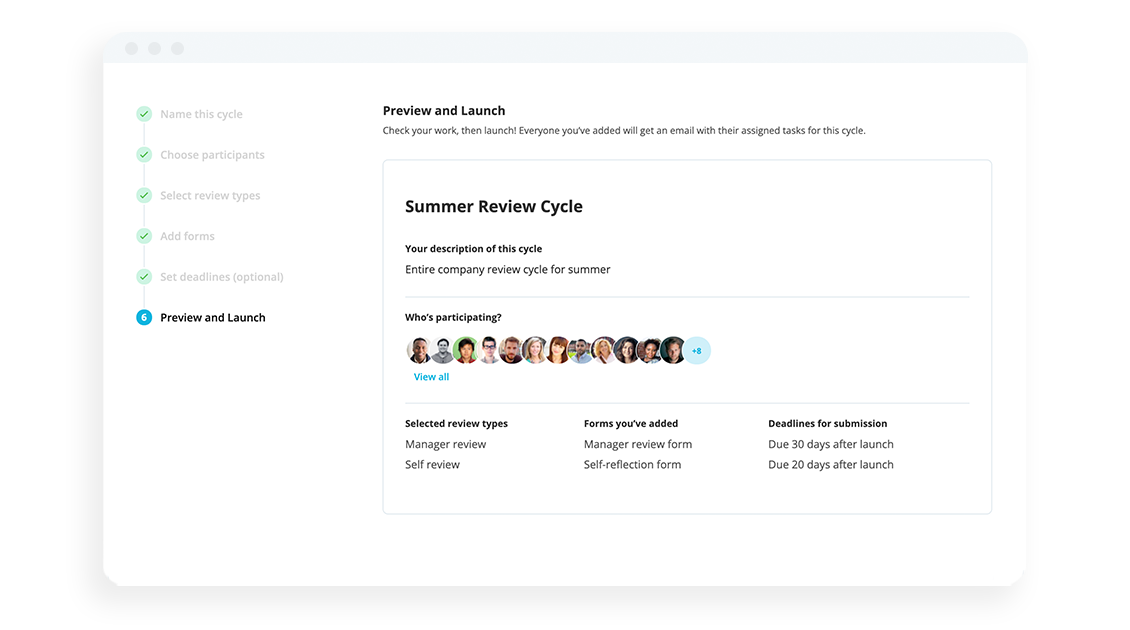A performance review should reward good work and motivate the employee. But in reality, it often does the opposite. Why is it that review discussions are increasingly just a chore? Learn in this article about the four common mistakes that are responsible, and how you can help managers to conduct reviews that motivate.
Download a template for performance appraisals here.
Contents
Common Review Methods Are No Longer Successful
The Four Biggest Mistakes in Appraising Employee Performance
Mistake 1: Only One Review per Year
Mistake 2: Lack of Transparency
Mistake 3: Standardized Evaluation Systems that Apply to All Employees
Mistake 4: Poorly Prepared Feedback Discussions
HR Software Reduces the Administrative Effort
Performance Appraisals Should Be a Positive Experience
Common Review Methods Are No Longer Successful
Performance reviews with employees are a common tool, but their impact on day-to-day business is close to zero. This is the result of a survey by Accenture that was conducted in 2016 among 2,100 managers and employees. 94 percent of the surveyed executives agreed with the statement that “performance reviews help to improve business results.” But only 40 percent believed that the current appraisal methods and processes are really appropriate.
Similar results among the employees: Two thirds don’t believe that their performance is evaluated objectively, and for almost 60 percent, the regular appraisal is a negative experience. Nine out of ten firmly believe that a different form of performance review would make them work better.
Nevertheless, in principle, no one wants to do without it. Roughly 90 percent of managers and employees want traditional review systems to still play a role. Bonuses and premiums should also be based on performance reviews.
Make Performance Reviews Simpler with Personio
Start running automated performance cycles with Personio today.
The Four Biggest Mistakes in Appraising Employee Performance
The conclusion: well thought out, but poorly executed. Why are the usual methods not working? What is it that compromises the motivating effect of an appraisal? Studies as well as this interview with Dr. Hofmuth reveal the four mistakes that are most often responsible:
- Review discussions don’t take place often enough.
- Reviews are not transparent.
- Reviews are not tailored to the individual.
- Managers are poorly prepared.
Mistake 1: Only One Appraisal per Year
Feedback, whether praise or criticism, only works if it is timely. Good managers praise their team members often and are specific, and whenever necessary, also address any potential for improvement in private. When the event that the feedback relates to is still fresh in the employee’s memory, it is easier for them to accept and internalize the feedback.
Who would seriously think of thanking their child or partner only once a year for all their efforts, and only then bring up the mistakes they have made over the course of the year? An annual employee review does exactly that. Most likely, employees will have a hard time remembering the events that their evaluation is based on. And even if they do – praise that is only expressed after months comes across as less honest, and criticism feels like a reckoning.
Some large corporations like Microsoft, Google and Accenture have therefore moved towards abolishing the annual review discussion with employees, including the performance appraisal. Half-yearly or quarterly discussions are the obvious alternative. In departments where the business is project based, it may make sense to conduct a review after each project. Some companies have even introduced weekly five-minute conversations with each employee.
Mistake 2: Lack of Transparency
A lack of transparency is one of the main reasons why performance reviews are perceived as unfair by many employees. A study found that fair behavior in discussions with employees has a much greater influence on employee satisfaction than the assessment itself, or any bonus payments.
Every employee should be able to understand which factors have influenced their individual evaluation. Which targets has the employee met, which ones not? Where was the performance above average, and where did they make mistakes? If employees don’t understand this, they will ultimately perceive their appraisal as a purely subjective opinion of their manager: “The boss just doesn’t like me.”
In the survey mentioned, almost 70 percent said they would like their review to be transparent. But only 30 percent actually experienced such openness.
More frequent and regular assessments are an important step in the right direction. If the review period is relatively short, it is easier to refer to specific situations and events. Ideally, managers should make notes about an employee’s performance on an ongoing basis. This way, they can use examples to explain any points of criticism. Or to give specific praise for a performance that was excellent.
Transparency also means to clearly define and document goals and targets. Employees must be 100 percent clear about the factors they will be measured by in their next review. Similarly, it must be clarified what exactly flows into assessment criteria like the “ability to work under pressure.” Is the manager only looking at how the employee behaves in a stressful situation? Or, to get the best score, is it also expected that they put in an extra shift when necessary?
Mistake 3: Standardized Evaluation Systems That Apply to All Employees
“As the workforce gets more diverse, organizations have to treat their employees as individuals, just like their customers,” says Rouven Fuchs of Accenture, one of the people in charge of the study. Standardized appraisal forms that are the same across all company departments no longer meet the varied requirements of employees.
Does it really make sense to evaluate the creativity level of a call center agent who takes orders over the phone all day and does data entry? How useful is it to evaluate the resilience of a top sales person who is constantly on the road and works 50 to 60 hours a week? What does an employee really think of general targets that the company has set, but cannot possibly be met in their specific task area?
Individual objectives and appraisals are key to employees feeling motivated. This means that different evaluation systems have to be developed for different areas, such as 360-degree feedback for managers. Or at least different metrics. Managers must be given sufficient room to tailor objectives to their employees at their discretion.
Mistake 4: Poorly Prepared Feedback Discussions
Towards year end, managers usually have a lot of work to do. Preparing performance reviews for five, ten, twenty or more employees, and conducting just as many employee discussions, is an extra burden. And what are the results? Conveyor-belt discussions and performance reviews that don’t hurt anyone. The main thing is to get this all over with, so the important year-end business can continue without much disruption.
Free Download: Performance Management Guide
Download our complete guide to performance management processes today.
Without thoroughly preparing each discussion, performance reviews as a motivation tool will not work. You can’t convey appreciation through a bureaucratic act, no matter how sophisticated the rating system. How to solve this dilemma: more effective reviews, but at the same time, with acceptable levels of effort?
HR Software Reduces the Administrative Burden
Regular, transparent and individual performance reviews require a lot of administrative work. Evaluation systems need to be developed. One needs to define metrics; create, distribute and complete questionnaires; write assessments; document target achievements; and calculate performance-related payments. These are just some of the tasks. At the end of the day, not much time is left for the people who this is really about.
The bureaucracy cannot be completely avoided, but it can be dealt with much more efficiently. Performance management software can help. For example, you can define individual performance metrics for each employee, both qualitative and quantitative. In the digital employee file, you can record an employee’s performance and assessment scores on an ongoing basis and save any comments.
Very important: Pay attention to protecting the data appropriately, as this is personal employee data that must be stored securely under restricted access. In order to get fair and objective assessments, you can have each employee reviewed by more than one manager. Performance-based salary components are calculated automatically based on target achievements and transferred to the payroll.
All information relevant for the performance review is stored in one place. Prior to a review meeting with the employee, managers can access the system to get a thorough picture. Long and tedious preparation is no longer required. Managers can fully focus on how they can foster and motivate each individual employee. This way, performance reviews go from an annual exercise to an integral part of everyday HR work.
Performance Reviews Should Be Positive
You can only be successful if you set goals for yourself and regularly check to make sure you have achieved them. Performance reviews are therefore rightly a popular tool in HR management.
Avoid the four mistakes explained above and ensure that your employees are assessed regularly, individually, and in a transparent manner. The best way to do this is with a structured performance management process. Why? A process is helpful to you, your managers and ultimately also your employees, as it provides a framework around performance reviews. It ensures that the performance management in your organization runs correctly, and that everyone involved gives it the same level of attention.
High Performance
With Personio






